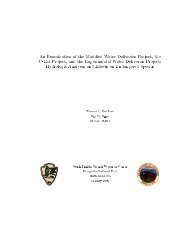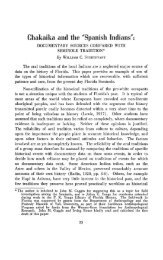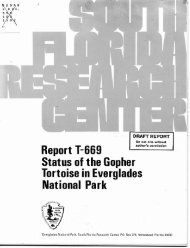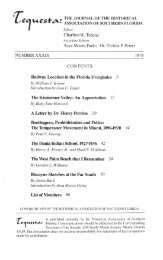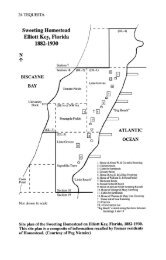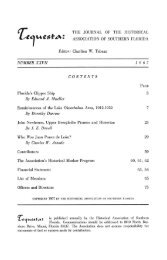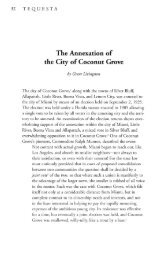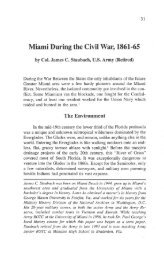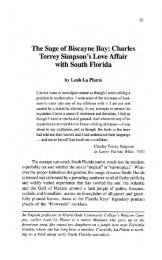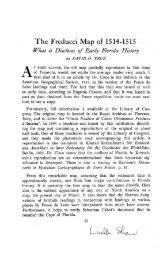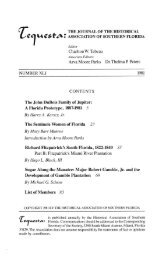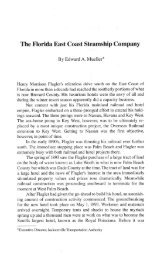Tequesta : Number - 50/1990 - FIU Digital Collections
Tequesta : Number - 50/1990 - FIU Digital Collections
Tequesta : Number - 50/1990 - FIU Digital Collections
You also want an ePaper? Increase the reach of your titles
YUMPU automatically turns print PDFs into web optimized ePapers that Google loves.
42 TEQUESTA<br />
Village and the units would be used as fire and police sub-stations and<br />
office space for the city's sewage disposal project.12<br />
The commission's decision to condemn Carver Village only added<br />
more tension to the situation. The Miami Daily News called the decision<br />
"a vote-getter, no more and no less." Everyone seemed to agree that<br />
making Carver Village out-of-bounds for blacks did nothing to solve<br />
the real issue. As one black man put it, "Negroes went out to Edison<br />
Center not to make trouble... They went out there so they could live in<br />
clean apartments with little yards around them. You don't see much of<br />
that in Negro town." 13<br />
Some citizens were outraged at the commission's decision. Attorney<br />
Victor Levine, referred to the decision as an "extravagant squandering<br />
of tax funds." As a taxpayer, Levine filed a suit to halt the condemnation<br />
proceedings. After all, the cost of acquiring Carver Village exceeded<br />
Miami's Treasury by $1.3 million. 14<br />
The situation literally exploded on September 22, 1951. At 2:15 a.m.,<br />
two 100-pound boxes of dynamite ripped two holes into the walls of an<br />
untenanted building in Carver Village. The dynamite shattered windows,<br />
twisted doors off their hinges, and ripped off the roof. Police<br />
estimated the damage to be in excess of $200,000. A third box<br />
containing 80 sticks of dynamite failed to detonate. The blasts shook<br />
the whole Northwest section of Miami. Dan Francis, who lived a few<br />
blocks away, grabbed his shotgun and headed for Carver Village. "You<br />
see," he stated, "I knew what had happened." A large group of blacks<br />
and whites gathered around Carver Village, but the newspapers reported<br />
no other disturbances. The Miami Police Department followed<br />
several leads to no avail. 15<br />
As police kept guard, an uneasy quiet prevailed at Carver Village.<br />
City Attorney John W. Watson drafted a letter to the Assistant U. S.<br />
Attorney, Fred Botts, asking an opinion on the legality of a declaration<br />
of a state of emergency "in view of civil rights statutes."16 Except for<br />
alarming area residents, the bombing of Carver Village "aroused no<br />
serious public reaction." 17 David Hawthorne asked the City Commission<br />
to vacate the Negroes from Carver Village; they refused his<br />
request, stating no law existed by which they could be evicted. After a<br />
few weeks Wiseheart and Bouvier hired a night-watchman to patrol<br />
Knight Manor and the police removed their guards.' 8<br />
In spite of increased purchases of arms and ammunition by whites,<br />
the month of October saw no disturbances at Carver Village. The<br />
dynamiting, however, continued. Three times during the month of



